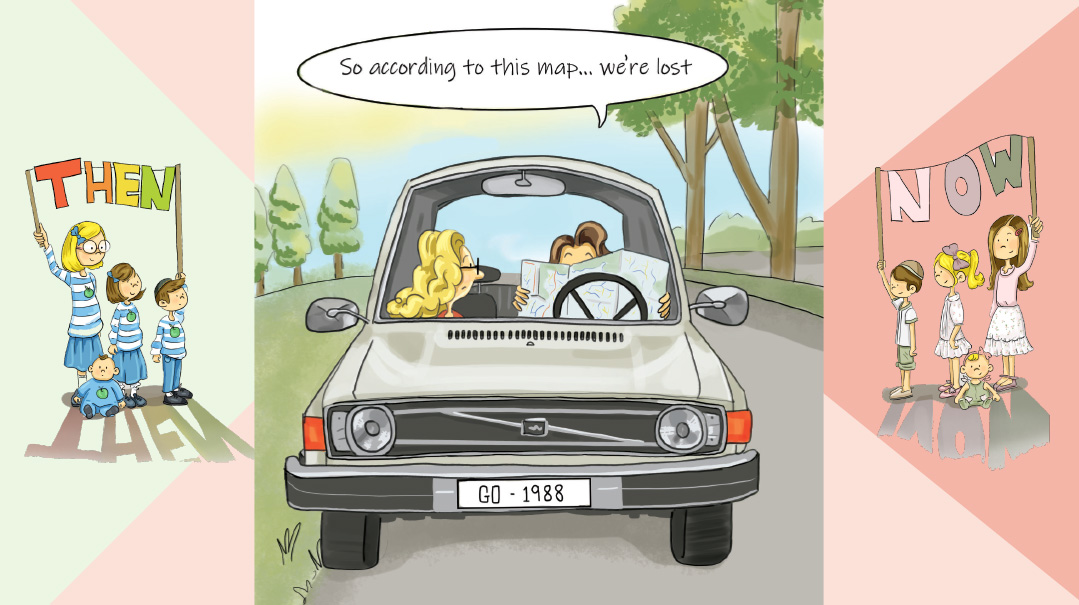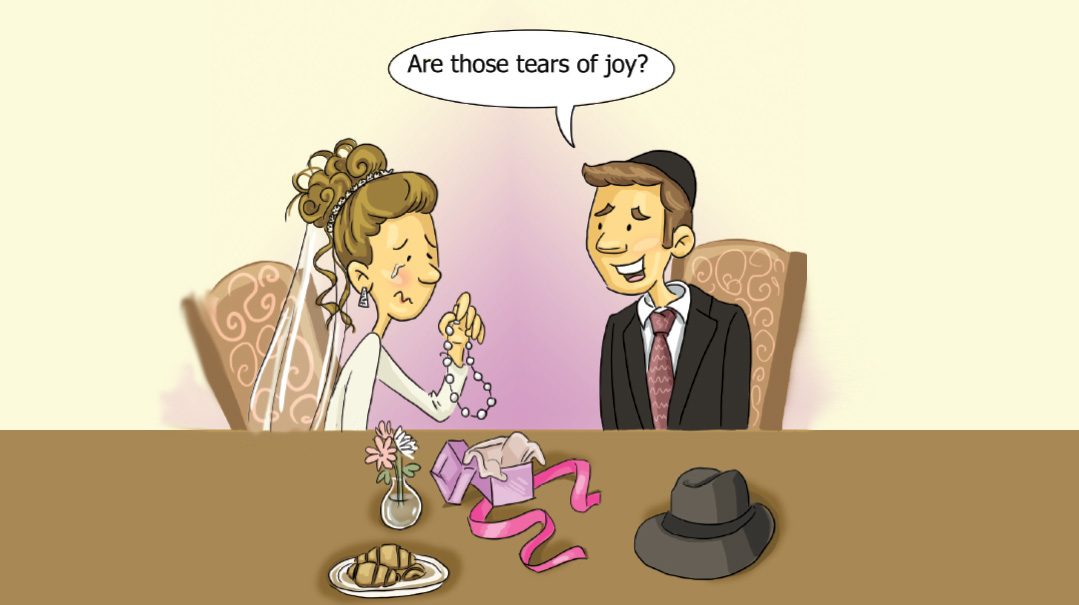Now and Then
| April 16, 2024How frum industry and fashion have evolved

Illustrated by Michal Goren
I like to think of myself as a young mother. I mean, hey, I’m not that much older than my kids. Yet when they refer to my childhood as “the olden days,” I’ve come to realize just how different it was. Our homes, summer homes, and lives were so different. When my mother got lost, she pulled out a map. As a kid, I called my mother from a pay phone. Sometimes, when I encounter objects or places that transport me back in time, it creates a longing to go back to those simpler days.
I once took my children to Murry’s Kosher Sox in South Fallsburg. I told Mr. Murray Goldwag, the legendary owner, that I love his store because a piece of my childhood remained intact. He smiled and said that everything is exactly the same besides his back.
While we can’t go back in time, we can take a trip down memory lane to reminisce about the good ol’ days, and see just how rapidly the trends have shifted in the last three decades.
When reading the pieces note how many of the proprietors mention how social media has intensified and pressurized consumersim. It makes you wonder: Is it all worth it?

Industry
Women’s Jewelry
Name
Rivky Abecsis, Jewelry by Rivky
The way it was…
Jewelry was simpler, chunkier, with a lot of shapes — round, oval, square. Colored stones were in style, and there was so much less variety to choose from.
Kallah jewelry has changed enormously! Several decades ago kallahs received gold bracelets. Tri-colored gold bracelets were in style, and diamond bracelets were reserved for the wealthy. Tennis bracelets for kallahs were virtually unheard of. The standard yichud room present was a pearl necklace.
Eternity bands and tennis necklaces were reserved for huge milestone anniversaries and occasions.
Today…
There is so much more variety with an artistic component. Today’s customers care a lot about designer pieces. (Going back several decades, who even heard of Van Cleef & Arpels?)
Eighty percent of kallahs receive tennis bracelets (in varying sizes, shapes, and quality of diamonds). The classic yichud room gift of pearls has been replaced by tennis bars or diamond hearts. (Layering thin necklaces has also become in style.) There still are some classy, wealthy mothers-in-law who believe that every woman should have a good set of South Sea pearls, but that’s the exception.
In recent years, many young married women are getting tennis necklaces and eternity bands within four or five years of marriage (sometimes as quickly as a first anniversary!). In general, the attitude has shifted to, “It’s a special occasion, of course I’m getting something.” Receiving a piece of real jewelry is not as significant and meaningful as it used to be.
As for the explosion of the costume jewelry, funky pieces, and fake tennis bracelets? True, everything can be copied and there are some great copies out there. But gold and diamonds are still king; enough people will always want the real thing.
Oops! We could not locate your form.







